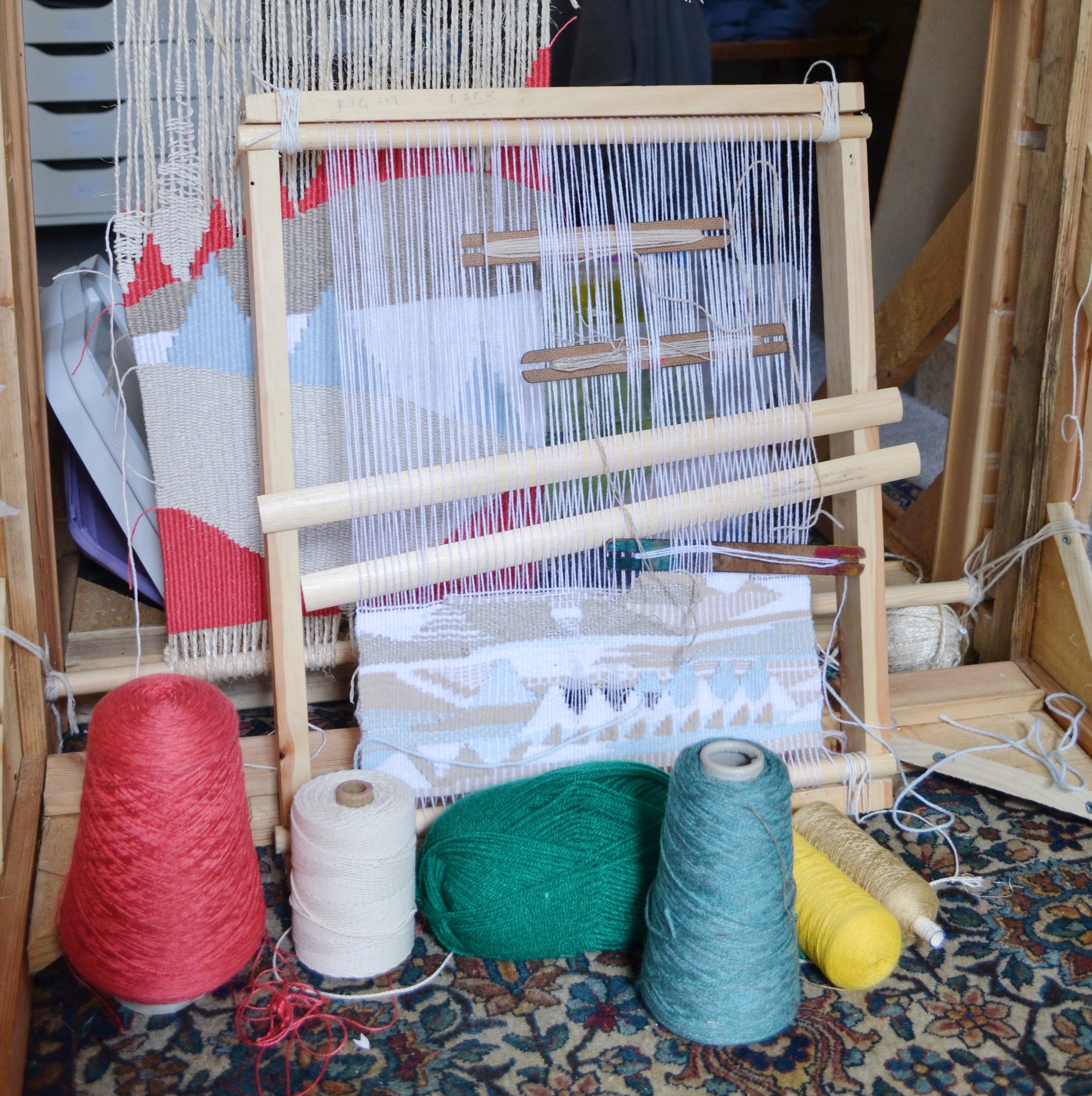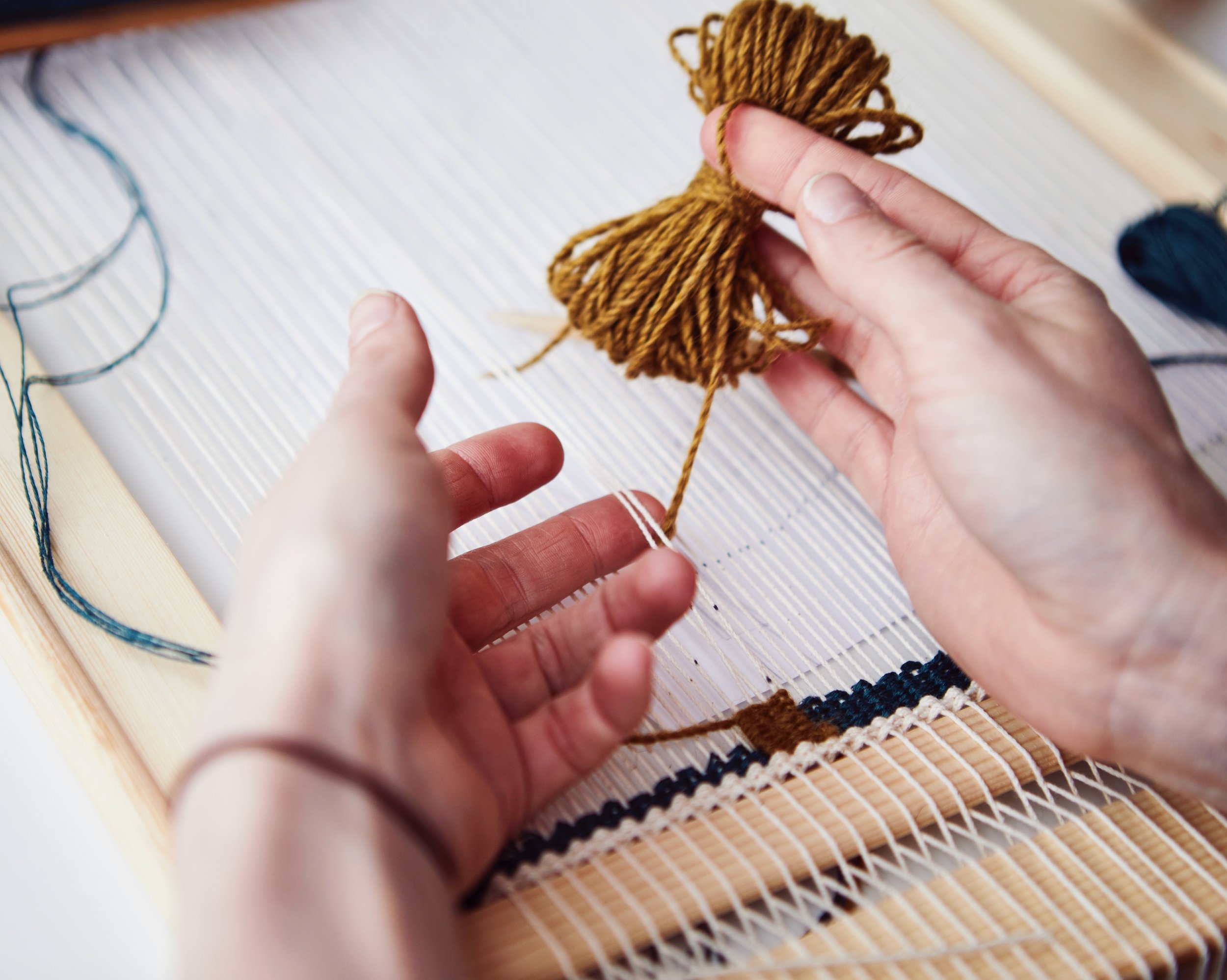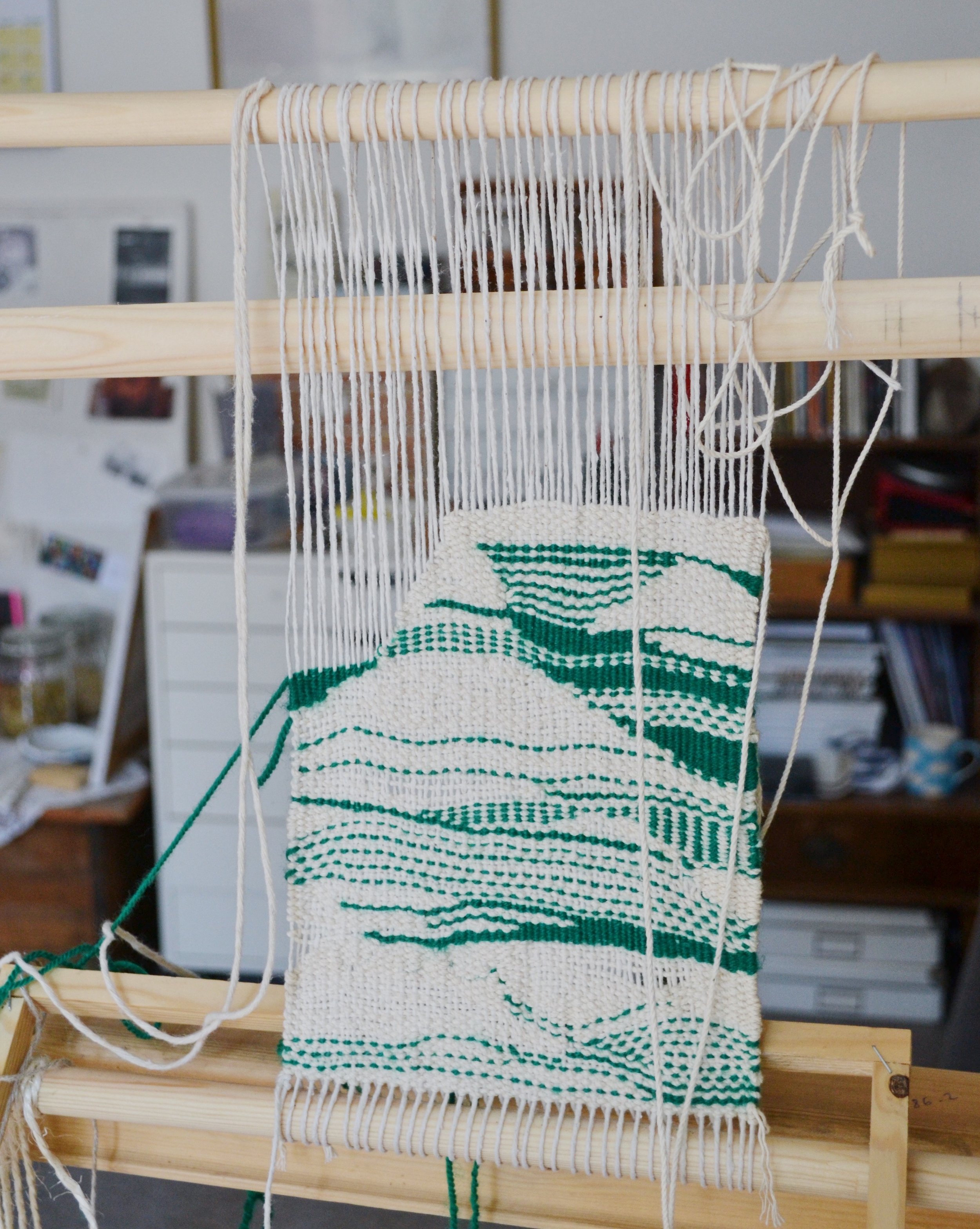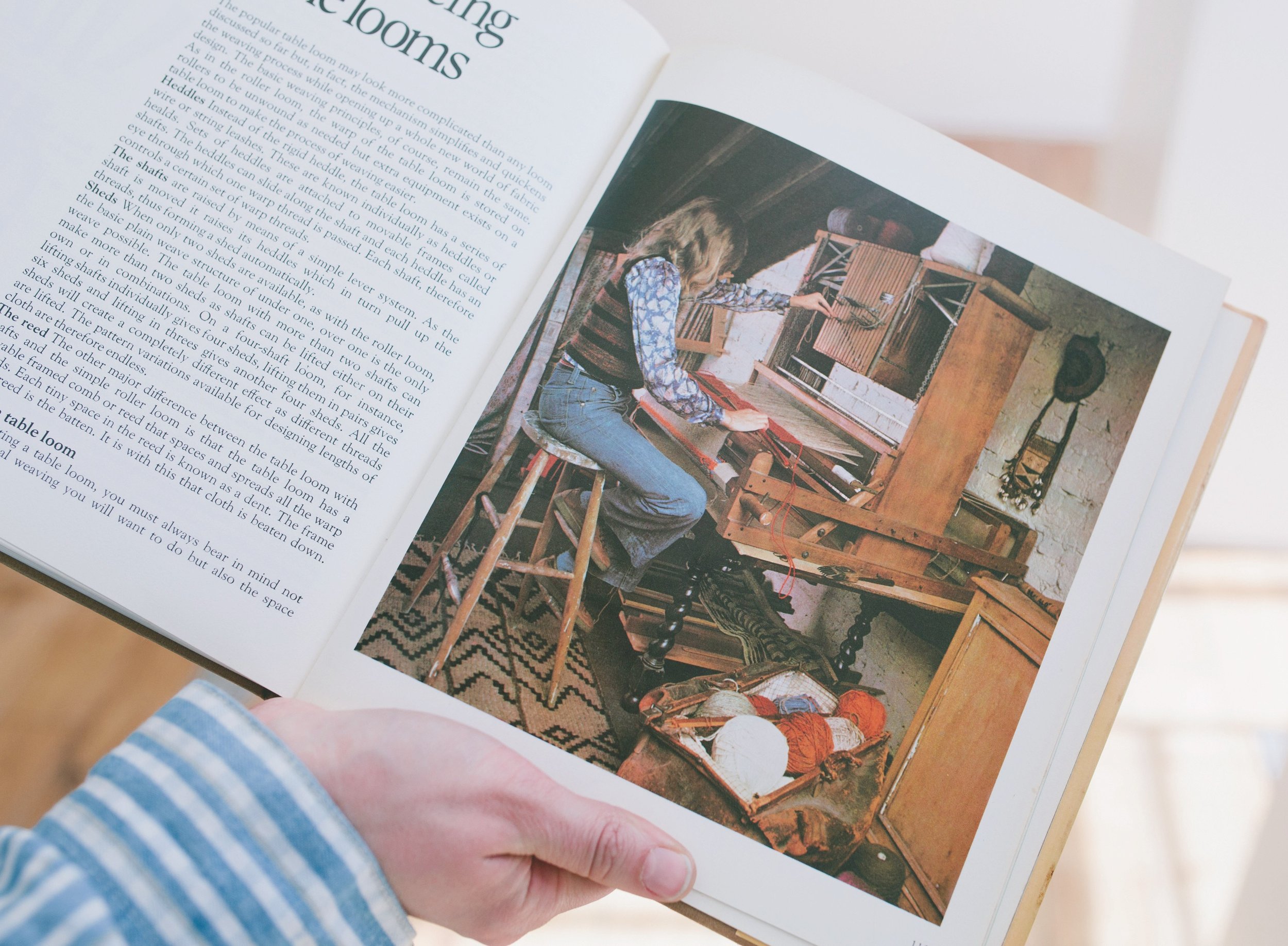Weaving On A Budget
My first handmade looms and thrifted weaving supplies
Like any craft, learning to weave can be expensive. When you add up the cost of looms, tools and all that yarn, it can feel inaccessible, especially if your budget is tight. Here in the UK we are in the midst of a cost of living crisis with soaring energy bills and high inflation (our revolving door of prime minsters hasn’t helped!) The last thing people want to do is take up an expensive new hobby.
But weaving doesn’t have to be pricey! Here at Balfour & Co we sell tapestry weaving kits so you can get everything you need in one go, and we do our best to keep them as affordable as possible. Even if you can’t stretch to a full kit, it’s still possible to get started with weaving, using the things you have around you.
I should know, because that’s how I got started. When I first began weaving, I was skint. I had just graduated art school and was living at home while I worked a part time internship for a homeware designer. I had a minimal budget for weaving supplies - so I had to improvise. In today’s post I’ll share my tips for learning to weave on a shoestring budget, and the best books for weaving beginners.
Weaving on a loom I made myself
Make Your Own Loom
When I first started out as a weaver, I made all my looms myself. I had a drill and lot of left-over scrap wood from my degree show installation, so I fashioned them into frame looms and started weaving.
If you don’t have the tools to make your own loom, there are plenty of things you can re-purpose and use as a loom. Over the years I have woven on old picture frames, mirror frames, canvas stretchers, books and even bricks!
Experimental weavings made by wrapping the warp around a book and a brick
The best option (in my opinion) is the canvas stretcher frame. We include these in our tapestry weaving kits because they’re perfect for starting to weave on. You can even add nails to yours to wrap the warp around and make weaving easier.
Canvas stretcher frames can be found in most good art supply shops, and you can find sturdy frames in charity shops and thrift stores as well. Don’t be afraid to take apart old unused canvases to get to the frame underneath!
A shuttle made from cardboard and a fork for beating down the weft
Make Your Own Tools
Another way to save money when starting to weave is making your own tools. When I was starting out, I carved my own shuttles from pine strip wood, but you can just as easily make them from sturdy cardboard. I’ve also seen weavers use clothes pegs as small shuttles, and forks for pressing down the weft as they weave.
Don’t be afraid to experiment when it comes to weaving tools! Different tools work for different weavers. Try lots of options and find out what works for you.
Weaving with weft bundles
Finally, remember to use your hands- the most important tool a weaver has! Many people overlook this, but there actually are many textile artists who primarily weave with their hands alone. You can wind up your weft into bundles, thread it through the warp and use your fingers to push the weft down in place.
Assorted warp yarns, including cotton string and garden twine
Improvise Your Materials
Your first step should be to look around the house to see what you can re-purpose for weaving. Do you have an old ball of string or garden twine stored somewhere? Is there an old t-shirt you could cut up, or a moth-eaten jumper you could unravel? You’ll be surprised what you find once you start looking.
You can also look for knitting yarn in discount stores and charity shops. Most of the cheapest yarn available is acrylic knitting wool, but even that can work well for tapestries! And if you’re buying yarn second hand you can often get great deals. My trick when I was starting out was to go into charity shops and ask them if they had any knitting wool in the back. They would almost always have something- one time they came back with two huge sacks of yarn and I was able to take my pick.
A tapestry I wove from cotton string and acrylic knitting wool
Finally, hardware and DIY stores are great sources for durable and cheap twine and string. Over the years I’ve bought things like gardening twine, cotton string and sisal rope to use as warp and weft yarns. Even thick rope can be untwisted into a yarn suited for weaving with!
Learn From Books
YouTube, Instagram & Pinterest are all great free resources for learning weaving techniques, but I think you can’t beat a good weaving book. For years I requested weaving books for Christmas and I checked every charity shop I passed for books on textiles or weaving.
The book I most recommend to budding tapestry weavers is Joanne Soroka’s Tapestry Weaving : Design & Technique. Other favourites include Fiona Daly’s Little Loom Weaving and Maryanne Moodie’s On The Loom and I’d be remiss if I didn’t mention our Tapestry Weaving Illustrated Guide.
One of my favourite weaving books, found in a charity shop for £3
But keep your eyes peeled for vintage weaving books as well. They are a wealth of information and are often extremely in-depth. These are the books I come back to again and again, and I know I’ll be referring to them for many years to come.
Hopefully this post has given you some ideas of things to try in your own weaving journey. Always remember that ultimately it’s not about the tools or materials you have- it’s about what you do with them.
Any thoughts, questions or budget weaving tips you’d like to share? Let me know in the comments!








